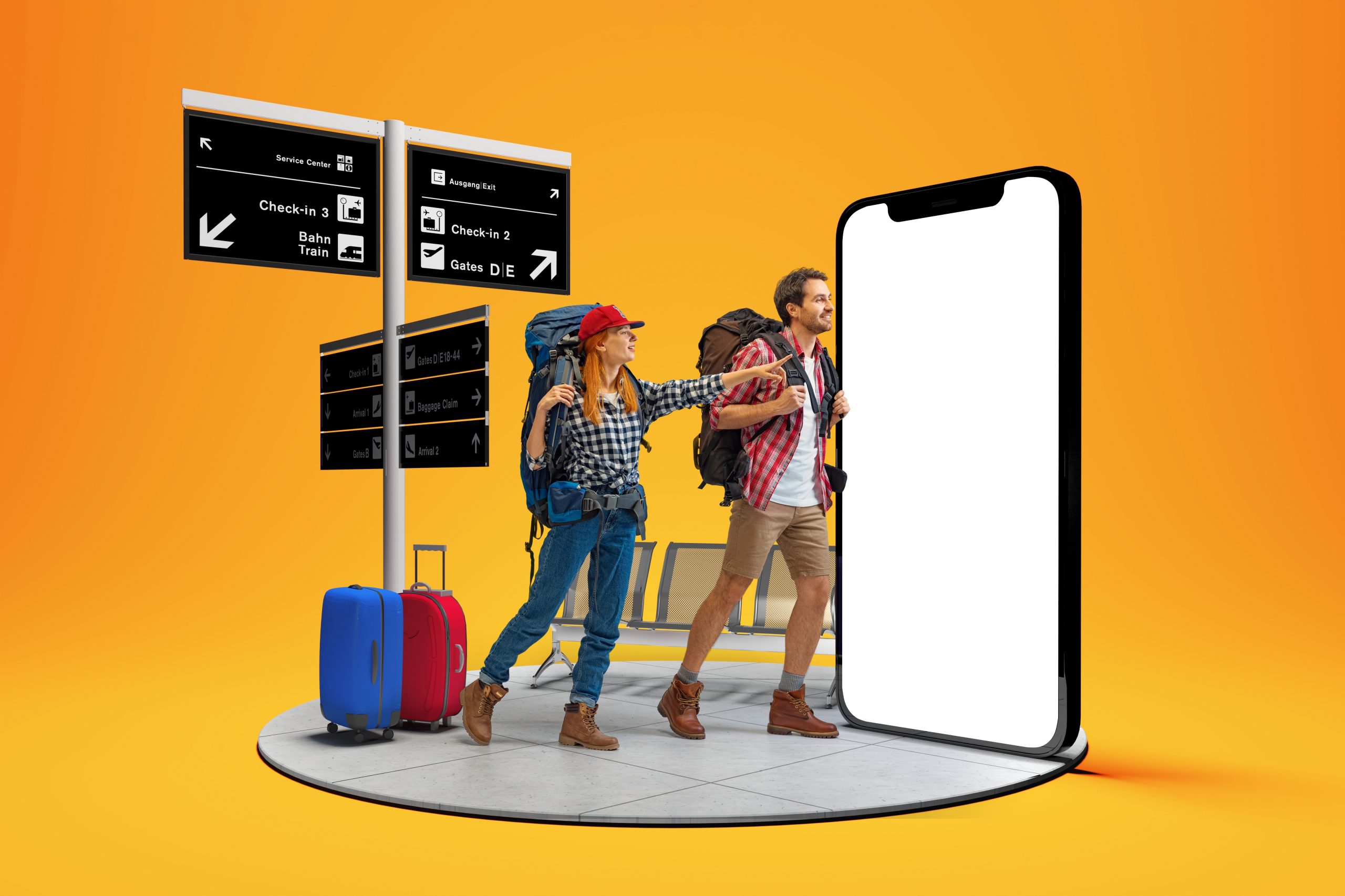Digital transformation: Modernise and digitise
- Like
- Digg
- Del
- Tumblr
- VKontakte
- Buffer
- Love This
- Odnoklassniki
- Meneame
- Blogger
- Amazon
- Yahoo Mail
- Gmail
- AOL
- Newsvine
- HackerNews
- Evernote
- MySpace
- Mail.ru
- Viadeo
- Line
- Comments
- Yummly
- SMS
- Viber
- Telegram
- Subscribe
- Skype
- Facebook Messenger
- Kakao
- LiveJournal
- Yammer
- Edgar
- Fintel
- Mix
- Instapaper
- Copy Link
Posted: 1 December 2023 | Christopher Summers | 1 comment
Chris Summers, IT Project Manager at Austin-Bergstrom International Airport, outlined in Issue 3, how digital transformation aids airports’ quest for sustainability.


The increased use of robotics at airports both inside and outside the terminal is primarily to compensate for the tight labour market. Humans can now focus their attention on what they do best, personalised assistance, while leaving the simple repetitive tasks to the robots.
Over the last few years, our industry has seen a dramatic shift to increased digitalisation, more self-service, and an increasing trend towards a more sustainable industry. Sustainability involves reducing environmental impact and/or optimising resources efficiency (reduce, recycle, reuse).
There is a new effort of waste diversion and recycling from Canada. OSCAR the trash-loving digital recycling assistant from intuitive technologies has been deployed at shopping centres, universities and airports in Canada. This engaging concept assists users by helping them sort what is trash, what is recyclable and what goes into compost. This very interactive digital camera and large screen display technology creates a fun way for people to participate in waste diversion while teaching them – and underlying AI – how to better sort out waste streams.
Taking ownership and responsibility
With respect to reducing CO2 emissions, I remember seeing a powerful public service announcement by Arnold Schwarzenegger where he admonished viewers that, “There is no ‘Chinese air’ or ‘American’ air or ‘European’ air. There is only ‘AIR’! Taking care of our environment is up to each human on the planet.”
It should be self-evident that companies…who push the increased digitalisation of their operations will be more agile and better able to respond to unexpected events.”
To address this global issue, more organisations are becoming proactive. Earlier this year Green.org released their list of the world’s top ten sustainable airports. Six of these were in Europe (Copenhagen, Amsterdam, Zurich, Frankfurt, Munich and Stockholm), three in North America (Seattle-Tacoma, San Francisco, and Vancouver) and Brisbane in Australia. Their efforts to create a more sustainable airport include a very long list of accomplishments among other things: reducing overall power and water consumption, installing solar, wind and geothermal as well and on-site bio-gas energy generation.


Passengers are now increasingly using their mobile devices to power their journeys and in doing so, are eliminate printing boarding passes, which is more sustainable.
They have also incorporated reclaimed water sources, recycling and composting waste streams, eliminating single-use plastics, installing public EV chargers, and converting to efficient LED lighting. This investment in the future of air travel will pay for financial and environmental dividends for years to come. Moreover, it is just in time for the explosion in global travel that began in 2022, which shows no signs of letting up anytime soon. We have seen a trend over the last decade or so for much higher capacity aircraft to meet this demand.
Another major trend in the sustainability arena is adoption of electric vehicles of all types, from cars and trucks to Ground Support Equipment (GSE). It also encompasses the transition to clean renewable energy sources to power them. Promoting the expansion of a circular economy and investment in climate-resilient infrastructure, especially in areas hard hit by very extreme weather events, as a majority of the world’s population have experienced over the last two decades.
It should be self-evident that companies, organisations, and governments who push the increased digitalisation of their operations will be more agile and better able to respond to unexpected events and are better able to plan for and deal with trends rather than be acted upon by them. One example is airlines’ increased use of digital company apps to reduce or eliminate printing boarding passes. Soon to go too, may be baggage tags. These may be replaced in many instances by personally owned RFID chips that passengers can track anywhere and may make lost luggage a thing of the past. As more airports modernise and digitise baggage handling systems RFID and video capture and analytics will become more commonplace.
Contactless travel
Another thing that is rapidly disappearing is having any app or documents at all to complete the passenger journey. Biometric identification has improved significantly over the past several years. With the use of advanced biometrics at every stage of the journey, passengers will soon be able to complete their journey by using their smiling (hopefully) face. You can see the digital transformation across the spectrum of activities, from touchless bag-drop at check-in, to TSA security check, purchasing at retail, duty free, food and beverage shops in the terminal, and finally boarding your aircraft, can now be done digitally with biometrics.
Speaking of travelling through the airport. Once you drop your bag (either at home, hotel, or car rental centre) you can use your wayfinding airport app to navigate and find food, beverage, shops or restrooms (for Fido/Fifi too!) For the visually impaired, newer apps provide audio directions and enhanced video imagery to steer you to your destination. Several airport guest service staff are even using mobile devices for live sign language and multi-lingual translation to assist passengers. For locations or shifts where finding staff is difficult, digital avatars have started appearing to answer questions and guide passengers.
The robots are coming
Since the Great Resignation of 2021 and the skyrocketing labour costs of 2022, we have seen a greater deployment of autonomous and robotic assistants. The increased use of robotics at airports both inside and outside the terminal is primarily to compensate for the tight labour market – not put existing staff out of work. Think of it in terms of hand tools; a carpenter with a power saw can be 10 times more productive and efficient than he can merely with a handsaw. Humans can now focus their attention on what they do best, personalised assistance, while leaving the simple repetitive tasks to the robots. We now have autonomous food and beverage delivery robots in terminals and self-driving aircraft and luggage tugs.
Better digital tools means we can also plan better. As technology becomes simpler to use and digital models are easier to build, this gives us the flexibility to create diverse scenarios and game play various inputs. Architects and designers are increasingly using these digital models to virtually (re)create every aspect of the passenger’s environment as well as the infrastructure that passengers never see.
Nearly every single airport can be duplicated or created using digital twins. Think of how heating and cooling systems, water and wastewater systems, lighting and shading systems, even internal and external physical structures and all their interconnections can be manipulated virtually in a hundred different variations to see how all these systems will interact in the physical world before a single item is procured much less installed!
With the rise of the use of digital twins in the aviation industry, organisations can now collaborate better and share data more easily, leading to better overall solutions and customer experiences. Airports can more easily share data with airline and concession partners to assist them becoming more efficient in their own operations thereby saving time and money.
Everywhere you look, we see the advantages of leveraging technology. The more we implement, the more capable we become and the more we can do. The more we do, the more opportunities arise where leveraging technology can make life better. This virtuous circle just keeps rolling down the runway launching a better future for us and for the planet.


Christopher Summers received his private pilot license while serving in the USAF as technology project manager and business analyst. Recently, he was an IT Project Manager at Austin-Bergstrom International airport. He loves assisting volunteer organisations like Pilots-n-Paws and Dog Is My Copilot.
Issue
Related topics
Contactless / Touchless technology, Digital transformation, New technologies, Operational efficiency, Passenger experience and seamless travel, Sustainability, Terminal operations



















Your blog on digital transformation, urging businesses to Modernise and Digitise, is a visionary guide! Insightful strategies for navigating the digital landscape. Thanks for illuminating the path to modernization and embracing the future!